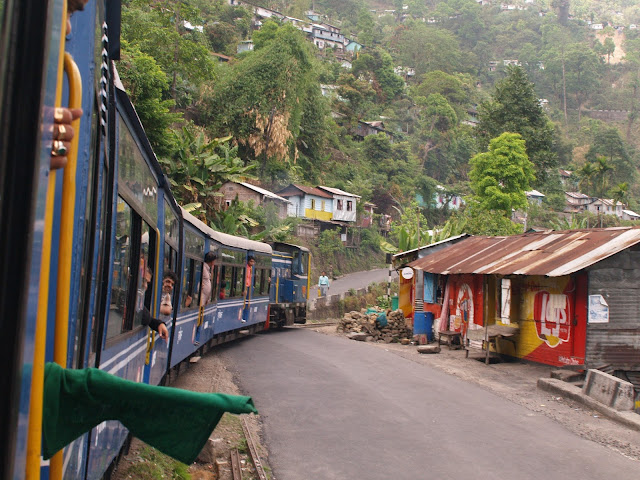The Darjeeling Toy Train: An Amazing Experience.
 |
| Darjeeling Toy Train |
Escaping from the heat that was already hard on the rest of India, I did a train marathon to reach the Himalayas.
I was thinking of staying in Kolkata (Kolkata is its current official name), but the overflowing human tide of this city, combined with the everlasting dirt and misery, and mixed with hyperbolic noise and pollution convinced me to follow the road to Darjeeling.
Darjeeling owes its worldwide fame to a product, tea, which was key in the economic development of colonial India and later independent India as it industrialized. Although it is only 600 kilometers from Calcutta, the capital of the British Raj, the journey to Darjeeling was an adventure in itself.
The plains and jungles of West Bengal were crossed by train to Siliguri, and from there the only possible transport to Darjeeling was the ox carts.
The prize was a cool and bucolic atmosphere, surrounded by tea plantations, which allowed to endure the suffocating summers in Calcutta.
In order to make the journey more comfortable, and at the same time facilitate the transport of tea and labor, one of the tallest and most scenic narrow gauge railways in the world was built.
Although baptized with the name of Toy Train, it was an extraordinary work of engineering, that since 1999 is Patrimony of the Humanity of the UNESCO, fulfilling the following criteria:
 |
| Darjeeling Toy Train and Kanchenjunga in one frame |
II: "is an example of the exchange of values in the development of technology, and of the impact of innovative transport systems on the social and economic development of a multicultural region."
IV: "the development of the railway in the s. XIX had a profound influence on social and economic development in many parts of the world. The mountain railway in India is an extraordinary example of development in high mountain areas. "
From 1881 the train travels the 88 kilometers between Siliguri and Darjeeling to "speeds of vertigo". In my case it was 9 hours, which makes it without a doubt the slowest train in the world.
The average is less than 10 kilometers per hour, but when you see the wonderful landscapes of the Himalayas passing by the window and calmly observe the daily life of its people, the rush dissipates just like the water vapor of the locomotive.
The penalty is that, after passing by the highest train station in India, Goom, at 2,400 meters altitude, the train slowly descends the mountain to reach Darjeeling, at 2,200 meters, this last part of the tour we made of night.
 |
| Ghum Railway Station in Winter |
The technological innovations of the mountain train were many, with several complete loops (completely surround a hill to avoid the steep slope) and zig-zags (changes of direction, with the same objective), and hundreds of level crossings and bridges.
Due to the peculiar orography of the area, mountainous and frequent rains, maintenance has always been very expensive, and on several occasions rail traffic has been interrupted for weeks.
The gauge is only 61 centimeters, and two of the original steam locomotives are still in operation, but these are now not used for the route from Siliguri, but as a tourist train between Darjeeling and Goom.
I was in a diesel locomotive which was pulling small passenger cars, with only 20 seats.
People go up and down quietly, and because the system is one-way, sometimes you have to make long stops at the stations to wait for the train that comes in the other direction.
The road goes parallel to the road to Darjeeling, and crosses frequently to take the curves, sometimes very closed, and there is a game of cat and mouse between the train, cars and other vehicles that circulate along the road , Which sometimes cross the road with very little margin of safety.
The rapid economic development of Darjeeling, thanks to the train, meant that today the city, once placid mountain station with its steep streets and privileged views of the Himalayas, is today an ugly and noisy Indian city of about 150,000 inhabitants.
80% is of Nepalese origin, in fact the most common language is Nepali, and then English; Hindi is only spoken by Indian tourists, dressed, and especially footwear, inappropriately for the cool mountain environment.
The food is a mixture of Indian and Nepalese cultures, and I fed myself with eating momos, the delicious dumplings Nepalese, in all its variants, vegetarian, cheese, meat, accompanied by sauces ranging from spicy to very spicy.











Post a Comment